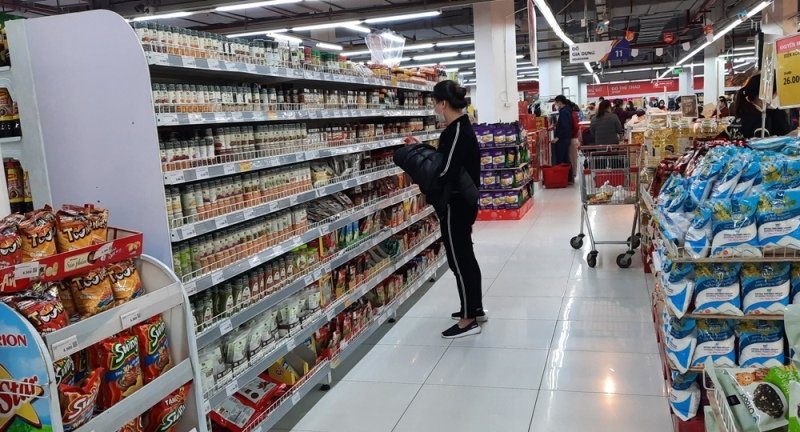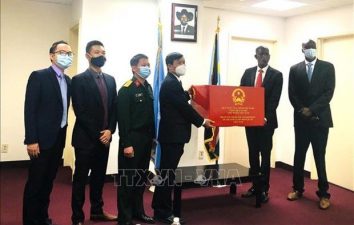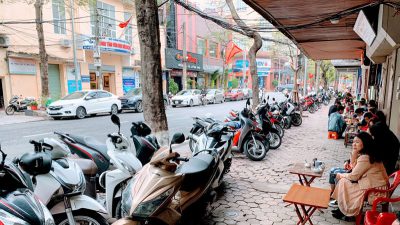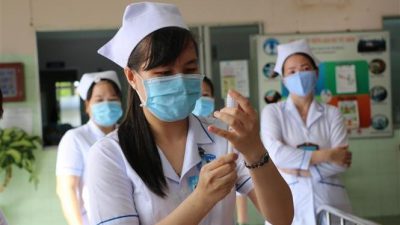
|
As the Vietnamese government is expanding its vaccination plan and boosting the implementation of the gigantic Programme on Economic Recovery and Development recently adopted, the economy is bouncing back strongly. |
|
In a resolution of the government’s cabinet meeting for January 2022 enacted a fortnight ago, the government has ordered the more drastic deployment of Vietnam’s inoculation programme, with the accomplishment of the third shot for all people in the country at the existing vaccination age until the end of the first quarter of the year. The government has also ordered that the vaccination for kids must be conducted as soon as possible. Especially the government has also asked ministries and localities to beef up vaccine diplomatic activities so that the country can ensure sufficient vaccines for all people. Australia has delivered 3.6 million Pfizer COVID-19 vaccine doses to Vietnam over recent weeks through a procurement agreement with UNICEF and in partnership with the MoH. The final 2.2 million doses came to Vietnam one week back. This delivery completed Australia’s commitment to share 7.8 million COVID-19 vaccine doses with Vietnam. In addition to the Pfizer doses procured through the United Nations Children’s Fund (UNICEF), Australia has shared 4.2 million AstraZeneca doses from its own supply since August 2021. “Vietnam has made tremendous progress with its COVID-19 vaccine rollout and I am proud that Australia could contribute towards this important work. It is critical to saving lives and boosting economic recovery,” said Australia’s Ambassador to Vietnam Robyn Mudie. UNICEF representative Rana Flowers also said, “Vietnam has proven itself highly efficient in the safe delivery of vaccines, ensuring that these are utilised effectively. These vaccines will help Vietnam in its effort to reach all, extending over time to children, and ensuring the rollout of booster doses. All of which contributes to a reduction in the severity of disease experienced, and importantly protects hospitals and the health workers from being overwhelmed”. Nearly two weeks, Prime Minister Pham Minh Chinh once again proposed over the phone chairman and CEO of Pfizer Albert Bourla help accelerate the delivery of 22 million doses of its COVID-19 vaccine for children aged 5-11 in Vietnam in the coming days, with a goal of completing the contract in April or May at the latest. PM Chinh said that Vietnam recently imported Pfizer’s vaccine to inject on children aged between 12 and 17, making them safer and more secure when going back to school. To date, over 97% of the children in this age group have received the first jab, and over 90% the second. Bourla affirmed that he will make every effort to speed up the implementation of the contract on supplying the vaccine for children from five to under 12 years old for Vietnam in the coming weeks as soon as possible. He also stated that Pfizer can cooperate with Vietnam in transferring technology to produce drugs to treat COVID-19. By late this week, Vietnam injected over 193 million doses of vaccines, with more than 75 million people now fully vaccinated with two doses, and more than 34 million booster shots and third shots administered. The World Bank commented that Vietnam’s accelerated vaccination rollout has and will help protect people and enterprises from bigger burdens, and this will also help create a bigger propellant for economic growth this year and beyond. “Visits to grocery and pharmacy rose sharply ahead of the Tet holiday, while trips to retail and recreation places like restaurants and shopping centres also recovered to pre-pandemic levels,” commented the World Bank in its February bulletin. “The sharp increase may be associated with people feeling less cautious about visiting shops and In addition to accelerating inoculation, the Vietnamese government has also eased mobility restrictions in order to recover the tourism sector, which directly created more than 9% of GDP in 2019, when the pandemic had almost not broken out strongly. Earlier Vietnam suspended the entry of all foreigners since March 2020, until further notice to limit the spread of COVID-19. The measure does not apply to diplomats, officials, foreign investors, experts, skilled workers, and those on designated and approved tour packages. However, the government has agreed to reopen Vietnam for international tourism from March 15, 2022. A detailed reopening plan is expected to be released soon by the relevant government authorities. Also, Vietnam lifted restrictions on the frequency of regular international flights from February 15, 2022 as per the Civil Aviation Authority of Vietnam. “A strong acceleration in the domestic vaccination campaign in recent months should limit the impact in both social and economic terms, with authorities ending travel restrictions on 15 February in a move likely to benefit the ailing tourism industry through the first quarter of 2022,” said Global analysts FocusEconomics. Relief package The National Assembly in January 2022 promulgated a hallmark resolution on fiscal and monetary policy to support the national programme on socioeconomic recovery and development for 2022-2023, with an estimated value of 15 billion USD. The programme was also enacted. The policy, also the first of its kind in Vietnam, came amid businesses and people suffering from massive difficulties caused by the health crisis. On a macroview, it is expected to enable the economy to achieve higher level of growth – at 6.5-7% in the 2021-2025 period. “Under this programme, overall planned on-budget fiscal measures are an estimated 4.5% of revised GDP. On the revenue side, the inclusion of tax and land rental deferrals reflects the relative success of these fiscal tools since the beginning of the crisis,” commented the World Bank in its February bulletin. Additionally, the VAT rate has been cut from 10 to 8% for most sub-sectors, amounting to an expected 0.6% (of revised GDP) reduction in VAT receipts. All revenue measures are to be implemented in 2022. The expenditure component (2.2% of revised GDP) is mostly composed of public investments and interest rate subsidies. Public investments (1.6% of revised GDP) include accelerating the projects in transport already listed in the medium-term public investment plan 2021-2025 and new projects in health, education, social protection, employment, digital transformation, tourism, and climate change adaption. “The bulk of these new investments will be implemented in 2023, and thus may not impact growth substantively in 2022,” the World Bank said. High hopes Global analysts FocusEconomics said that after the economy rebounded sharply in Q4, with growth once again underpinned by strong output from the manufacturing sector, momentum is likely to carry over into the new year. “The economy is estimated to grow at the fastest rate in the region this year, following 2021’s relatively weak expansion. Higher growth in consumer and capital spending, combined with a robust external sector, should boost activity in 2022,” FocusEconomics said in a report released a few days ago. “Our panellists estimate that industrial output will grow 10.5% in 2022, which is up 2.1 percentage points from last month’s forecast, and expand 8.3% in 2023. FocusEconomics Consensus Forecast panellists expect GDP to expand 7.2% At a seminar organised by the Ministry of Foreign Affairs and Standard Chartered Bank last week and attended by 120 delegates from the government, ministries, businesses, international organisations, and experts, Edward Lee – chief economist for ASEAN and South Asia at Standard Chartered Bank – said that the Vietnamese economy is forecast to bounce back strongly, growing at 6.7% this year and 7% in 2023. Tim Leelahaphan, economist for Vietnam and Thailand at Standard Chartered Bank, also said Vietnam’s economy will strongly recover at the end of the first quarter of 2022, gaining momentum for the rest of the year as well as for the medium-term growth. Leelahaphan expected Vietnam to remain “a key part of the global supply chain as rising wages in China, US-China trade tensions have compelled companies to relocate their production centres out of China or to opt for a China+1 strategy.” Meanwhile, the ASEAN+3 Macroeconomic Research Office (AMRO) based in Singapore has predicted that Vietnam’s growth rate is likely to hit about 7.5% this year. “Vietnam, the most diverse economy within the CLMV bloc, has continued to expand its manufacturing base in a wide range of subsectors, such as food and beverage, textile products, leather products, and electrical and optical equipment, from an initial start in primary and agricultural products,” AMRO said in its report assessing Source: Nhan Dan Online |


